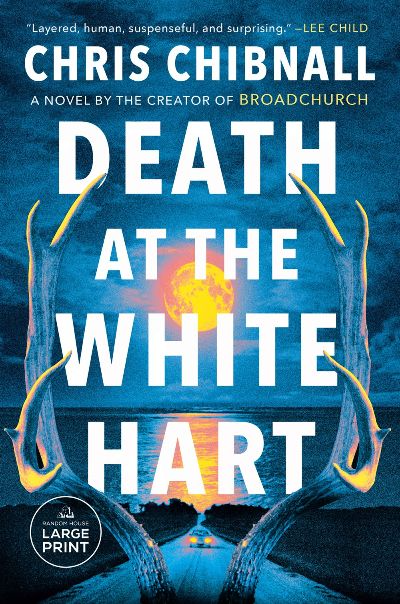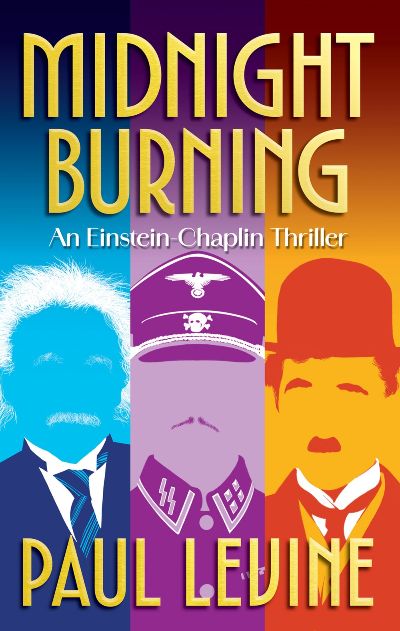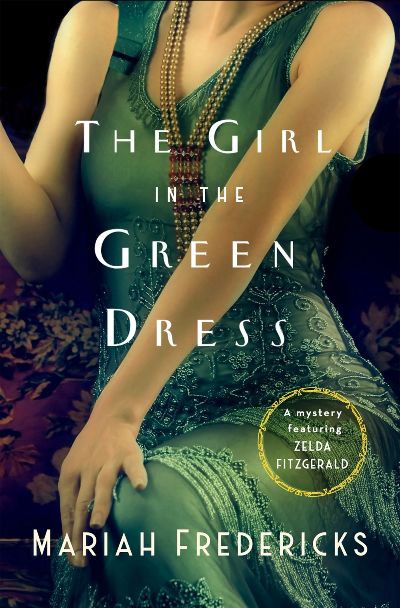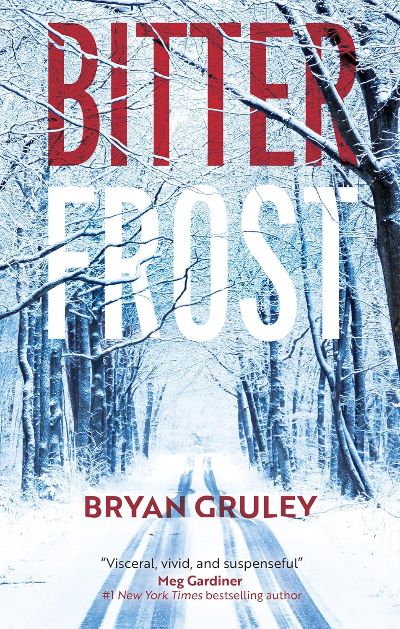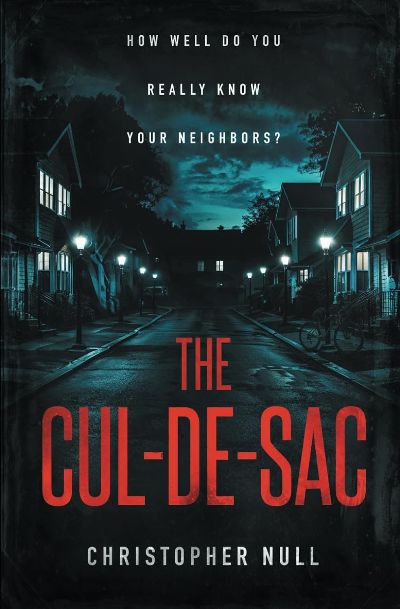Their messiness portrayed with cringe-inducing accuracy, hapless characters strive to survive what life throws at them—and it’s a lot—in Edgar-nominated Jaworowski’s latest. Reed, a young man who’s autistic, has just lost the person at the center of his life. He wants to do the right thing, and…kind of…wants to do what his brother, who is his guardian, asks, but surely a little excursion to keep a promise won’t hurt anyone. Then there’s Billy, another resident of Locksburg, PA, who needs his single-mother’s help to hide one of the bodies of the title. It’s not a fresh body, leading to some gruesome scenes but mostly to edge-of-your-seat moments as the two struggle to stop their lives from sliding even deeper into darkness. Trying to escape the town is Liz, a musician who’s taken up with a local bad boy who, you guessed it, gets both of them into trouble just as she’s on the brink of getting out. These all-too-realistic lives collide in a memorably character-driven story whose dialog—especially that of Liz—will make readers laugh even as they despair that anything can ever go right in Locksburg. Plenty of readers love a small-town thriller and this one’s just the ticket.
Henrietta Thornton
There’s no horror here but plenty of scares as nine-year-old Effie must parent her siblings in her family’s freezing shack in the western New Zealand bush. With the nearest town, Koraha, six hours walk through dense forest, Mum with a new baby and Dad mostly off hunting and fishing, it’s all Effie can do to keep the little ones fed and warm. The new baby, the fourth child and named four, heralds a much harder chapter for the family, one that ultimately sees Effie living as an adult in Scotland. She’s compelled to return to New Zealand when reports reach her that a little girl—unknown to Effie but looking exactly like her—has shown up in the town, injured and starving. Who she is and what happened in the past is a twist-filled saga that drops readers right into the dangerous landscapes that are both the New Zealand wilderness (“an unforgiving thing that would eat them up”) and the off-off grid family. One to remember, and a must for fans of Barbara Kingsolver’s Poisonwood Bible and Alisa Alering’s Smothermoss.
Brace yourself: this tale of obsession is WILD. Our DC public relations protagonist, Margo, is worried her life isn’t going as planned, with the central problem being her lack of an acceptable (read: fancy) home. Once she and her increasingly worried husband, Ian, have that, she will allow herself to get on with the rest of the plan. But as it stands, she has “No house, no baby. No house, no family. No house, no life.” She finds the perfect place but knows they will probably be outbid for it, like always. The DC property market is no joke, but neither is Margo’s determination to have that home no matter what, and her increasingly unhinged measures to be the winning bidder will keep readers gripped. If you like a main character who takes up all the space, this one’s for you, and it’s a must for book clubs as well, as Margo’s antics beg to be dissected over wine.
A likable duo is at the center of Broadchurch-creator Chibnall’s debut: detectives Nicola Bridge and her newbie partner, Harry Ward, dubbed Westlife for his boy-band looks and first name. Small-town Fleetcombe, on England’s Dorset coast, is the setting; it’s Nicola’s hometown, and she’s back to separate her husband from an affair, a plot line that creates a realistic undercurrent of desperation that matches the bizarre crime facing the new partners. The naked body of a man is found tied to a chair on a road near town. That’s odd enough in Fleetcombe, where sharp words at the local pubs—one of them the White Hart of the book’s title—are about as violent as it gets. But there’s more: the body has a stag’s antlers affixed to its head, a sinister touch that eager Harry tries to tie to mythology and local history, only to be brought back to earth by his more practical and seasoned colleague. Work the evidence, she says, setting the two on a winding path that creates a solid procedural enjoyably filled with oddball townspeople, personal travails, the inevitable local criminal element, and one very savvy little girl, a character whom readers will want to swoop in and save. This absorbing thriller shows all the hallmarks of having been written by a master of TV drama.
Charlie Chaplin and Albert Einstein met in real life. Here that short interaction is included—the author has done his research, big time—but as part of a fictional steadfast friendship between the two that’s filled with loving banter and crime solving. The series debuts in 1937 as the scientist and actor are older, well-known figures. Chaplin is considering a movie that will lampoon Hitler (his real film The Great Dictator) and Einstein is teaching at Caltech and following with dread and guilt the development of a devastating weapon, the atom bomb, enabled by his work. When Nazis visit LA as part of a propaganda effort and all signs point to looming danger, the friends team up with Georgia Ann Robinson, the first Black female detective in LAPD history (also a real person), to thwart the plans. Antisemitism and racism are given lurid front seats here, with both shown as grotesque blights on our world. Readers will readily see parallels with white-nationalism today, making this a timely and ire-provoking read. They will also learn a great deal about Chaplin (less about Einstein, though he’s still well fleshed out), with his ladies-man ways on full display along with his kindness and sharp wit. This series promises to mix fun capers with serious societal commentary and is one to watch out for.
In Ward’s clever and unusual debut, the reader is put to work solving a murder, their task propelled by a sassy narrator who insults them throughout. The tale opens with murder-mystery dinner at which guests hear the story of a nanny who’s murdered in a case of mistaken identity; when the former man of the house, Lord Verreman, discovers that he hasn’t killed his wife, Lady Verreman is able to escape. At least, that’s what police believe. At the dinner, guests are told of various anomalies at the scene and alibis and motives for others connected to the case, and are led through the inquest after the nanny’s autopsy. Then the viewpoint switches: a detective is hired by the rich couple’s son and is required to visit the the home where the murder happened, hear the evidence—in a most unusual delivery—and reveal the culprit. These first two sections are unusual enough, but the third tops them: the reader is presented with all the evidence and must make choices step by step as to what they believe, in the end reaching a verdict of their own (a contract is in place, after all). What an intriguing start for this author!
As in her earlier novels (The Lindbergh Nanny, The Wharton Plot), Fredericks brings history to life through the eyes of a lesser mortal who is thrust into the world of the rich—and in this case, the notorious—and as in her previous works, succeeds brilliantly. Morris Markey is a New York Daily News journalist in the roaring twenties when he sees Joseph Elwell, a neighbor on the swanky side of their Manhattan street, escorted home by the mysterious woman of the book’s title, her dress resembling confetti made from money. He thinks little of it—the rich will be the rich, after all—until the next morning, when Elwell is found dead. Markey seeks help from a couple who know everyone and can get in anywhere: Scott and Zelda Fitzgerald, whose glamorous yet sad life is examined in emotional detail by Fredericks. Scott gets less limelight here than Zelda, whose desperation to be fascinating takes center stage and will engross readers. Authenticity shines from the page as the author provides tidbits from period journalism and other sources and recreates the forced frippery of the Fitzgeralds’ sometimes-mean bon mots. A real world is carefully created around the question of who the girl in the green dress is, whether she killed Elwell, and how far into the Fitzgeralds’ glitzy world a working man dares go. For a great pairing, try this alongside Avery Cunningham’s The Mayor of Maxwell Street.
Bitterfrost, Michigan, is a town that revolves around hockey—a rich local family, the Paynes, owns the adored IceKings team and the rink they play at—and nights frittered away at the Lost Loon, a dismal watering hole. Jimmy Baker works at the rink driving the Zamboni, which keeps him in the sport he loves even after his minor league career stalled. Jimmy was the guy the manager could rely on to take out members of the opposition, but it went too far and now he drives Zelda, enjoying small-town celebrity and missing the daughter his ex keeps from him. Then he wakes up sore all over and with a bloody face, black eyes, and drag marks in the snow outside his house. With no idea what happened—didn’t he have only one drink at the Loon?—he tells others he slipped on his porch, knowing it’s likely a lie and that his history means it was much worse. When a body is found in a burned car outside town, he fears the worst and is soon sitting in court. Defending him is Devyn Payne, daughter of the rink owner, who has a past of her own—a notorious court case that the town can’t forgive her work on. The defendant and attorney find themselves in the crosshairs of both town gossip and further violence, with all ending in an engrossing courtroom scene. This is the first in a series, thankfully, as readers will want to visit this chilly-in-every-way community again.

Brett, Simon. Death in the Dressing Room (A Fethering Mystery #22.) April 1, 2025. 192 pages. Severn.
In Brett’s latest, readers will meet (or be reintroduced to) Carole and Jude. The former is an uptight, former Home Office type now retired, and Jude is a professional “healer” and every bit the former hippie. In this story, the women are investigating the murder a star whose body was found in the local theater. Read more
Lyuzna, Olesya. Glitter in the Dark. April 1, 2025. 360 pages. Mysterious Press. DEBUT
We are taken back to the roaring ’20s, to speakeasys and the Ziegfeld Follies, in this gritty noir with Ginny Dugan as our main character and sleuth. This debut turns back the clock with authentic detail and sharply drawn characters and a strong sense of violence and lawlessness. Read more
Phillips, Maha Khan. The Museum Detective. April 1, 2025. 336 pages. Soho Crime.
A wonderfully compelling crime thriller that takes the reader deep into Pakistan in pursuit of a newly discovered mummy, known as the Persian Princess, and based on a real-life scandal that rocked the antiquities world back in 2000. Read more
Sutanto, Jesse Q. Vera Wong’s Guide to Snooping (On a Dead Man) (A Vera Wong novel #2). April 1, 2025. 336 pages. Berkley.
Many readers will be delighted at the return of Vera Wong, a great cozy hero if there ever was one. Vera comes across a young woman outside the police station who appears quite upset. It turns out that the woman’s boyfriend has recently died, possibly by suicide, and she fears that she may have had a role in his death. That question pushes Vera into a story that’s quite a bit darker than the first book. Read more
Thielman, Mark. The Devil’s Kitchen: A Murder in Yellowstone. April 1, 2025. 310 pages. Severn River Publishing.
A reader may justifiably expect this book to be set in the American west, but this work, a two-novel combination, begins with the French neoclassical painter Jacques-Louis David and and the French Revolution. The modern-day mystery is set in Yellowstone National Park, where seasonal ranger and retired Fort Worth cop Clarence Johnson discovers a corpse as an unplanned part of his tour of park history. Read more
Wheeler, Claire Anderson. The Gatsby Gambit. April 1, 2025. 368 pages. Viking.
It takes a lot of guts to write a book based on one of America’s most beloved novels, Fitzgerald’s The Great Gatsby. But Wheeler successfully takes the original setting, Jay Gatsby’s mansion in West Egg during the summer, and the same cast of characters and shifts the narrative into a work of crime fiction. Read more
Only-child Eliza is not thrilled her parents are moving them from San Francisco to the suburbs, and meeting the intriguing, decidedly odd residents of their new cul-de-sac, readers will hardly blame her. There’s Klaus, a German computer scientist who keeps to himself, except when he’s killing women and burying them in his garden. Then Alex, who’s physically disabled by kidney disease and socially by DIY haircuts, and who’s reluctantly roped into tutoring Eliza in algebra—he explains that he’s independently wealthy and doesn’t need or want the job, but her mom insists. Their neighbor Peggy tries to be friendly but is just off. Then there’s a house that’s burned and remains empty, apparently for years. This lonely street is made sinister by its silence, but there’s activity behind closed doors. A fledgling romance—or are they just friends?—sets off the central problem of the book: one neighbor is killed, others are involved in the aftermath, and the police are not letting it go, with the investigation revealing Klaus’s garden of horrors. A closing twist when a neighbor does something most unexpected caps this quirky, often amusing suburban jaunt that’s a must for fans of domestic suspense.




